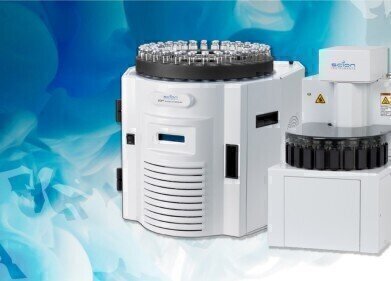Industrial News
Tasty Tomatoes — Can Chromatography Spot a Juicy One
Jul 08 2016
One of the favourite salad items are tomatoes — a fruit according to botanists, but following a US Supreme Court ruling, tomatoes are legally a vegetable. Tomatoes originated in Central and South America and spread throughout the world following the Spanish colonization of the Americas.
But do you find the tomatoes you eat full of flavour? Let’s take a look at some recent findings from the tomato-world which might just shed some light on why your tomatoes taste like they do.
Storing tomatoes — fridge or room?
Researchers at the Agricultural Research Service — part of the US Department of Agriculture — studied the effects of storage at room temperature and in a fridge, and also the effect of blanching on the flavour of tomatoes.
They used 60 tomatoes which were separated into equal groups as follows:
- Refridgerated at 5?C for four days.
- Room temperature (20?C) for four days then dipped in hot water (50?C) for five minutes
- Room temperature (20?C) for four days (control).
In a paper published in HortScience the team explain that the conditions were chosen to represent standard handling conditions of tomatoes in home or food service kitchens. The tomatoes were then cut up and their flavour profiles analysed by gas chromatography and an electronic nose. The use of gas chromatography and developments in electronic noses is the subject of this article, Gas Detection — Predicting the Future in Chromatography Today.
The team detected 42 volatile compounds that contributed to the flavour of the tomatoes. Compared to the control tomatoes — the refrigerated tomatoes had overall volatile levels reduced by 68% and 25 of the flavour compounds at lower levels. The blanched tomatoes gave similar results with 22 of the flavour compounds reduced with an overall reduction of 63% in the volatile levels.
The results suggest that tomatoes should be stored at room temperature to maximise the juicy flavours they contain.
Acid and sugar levels — key to a tomatoes flavour
Another area of research at the ARS labs involved a long-term study over seven years to identify the best varieties of tomatoes to grow in Florida. Researchers grew 38 different types of tomatoes over the seven-year period to determine which tomatoes had the best flavour at different times of the year — Florida has an all-year round growing season.
Using a combination of human taste-testers and gas and liquid chromatography they analysed the tomatoes for aroma compounds and gave the tomatoes a mark for flavour, sweetness and sourness.
The team found that tomatoes needed a certain acid level to have good flavour, and that the tomatoes with the most flavour also had the higher sugar levels. The season that the tomatoes were grown in was also a factor — with tomatoes picked in June having more flavour than December harvested tomatoes. Something the researchers suggest is linked to the amount of sunshine the growing fruit gets.
So, for the tastiest tomatoes — pick acidic, sweet, summer grown tomatoes and keep them at room temperature.
Digital Edition
Chromatography Today - Buyers' Guide 2022
October 2023
In This Edition Modern & Practical Applications - Accelerating ADC Development with Mass Spectrometry - Implementing High-Resolution Ion Mobility into Peptide Mapping Workflows Chromatogr...
View all digital editions
Events
ACS National Meeting - Fall 2024
Aug 18 2024 Denver, CO, USA
Sep 04 2024 Chiba, Tokyo, Japan
Sep 04 2024 University of Warwick, Coventry, UK
Sep 10 2024 Rockville, MD, USA
Plastics Recycling World Expo Europe
Sep 11 2024 Brussels, Belgium














